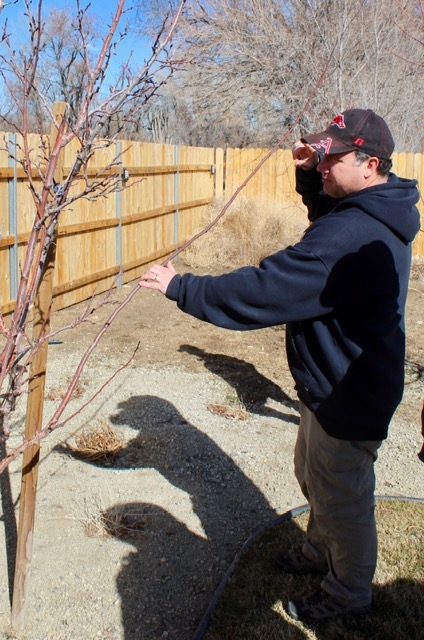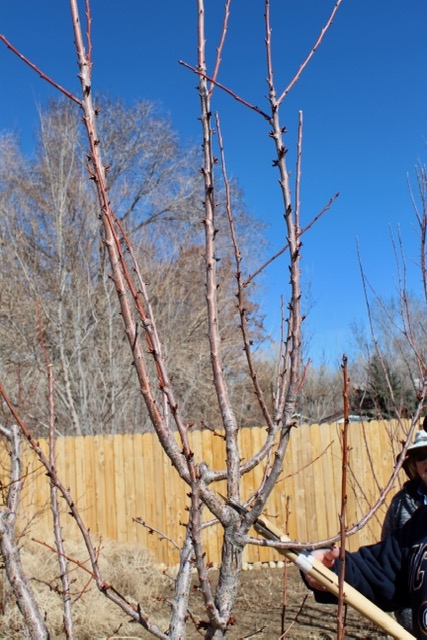If you have not already done so, it is time to prune your young fruit trees!
On February 25, 2019, Dustin Blakey demonstrated how to prune young fruit trees to a group of about 25 Master Gardeners and other home gardeners at the home orchard of Kristin Ostly. This discussion covers some of the high points of his demonstration.
The primary purpose of pruning young trees is to develop structure so that the trees will be productive in the long haul. There are two primary shapes that can be chosen: the “vase,” or the “Christmas tree.” The vase shaped, or open structure, is the most commonly used in the home orchard. This method keeps the center of the tree free of large branches to allow sunlight to reach the lower fruiting wood. The Christmas tree shape, also known as the central leader system, is frequently used in commercial orchards, to allow trees to be closer together. This method keeps trees with lateral branches arranged in separate layers and branches in lower tiers wider than those in upper ones.

As Dustin proceeded to demonstrate young fruit tree pruning he moved from tree to tree and consistently: (1) removed branches that grew to the inside of his desired vase shape; (2) where branches were competing for space, chose the more vigorous branch to survive and cut back the competing branch; (3) removed dead wood and suckers; and (4) removed branches to keep the open center, removing branches that would overly shade lower fruiting wood.
For further information see Training and Pruning Deciduous Trees, Publication 8057, UC ANR.
